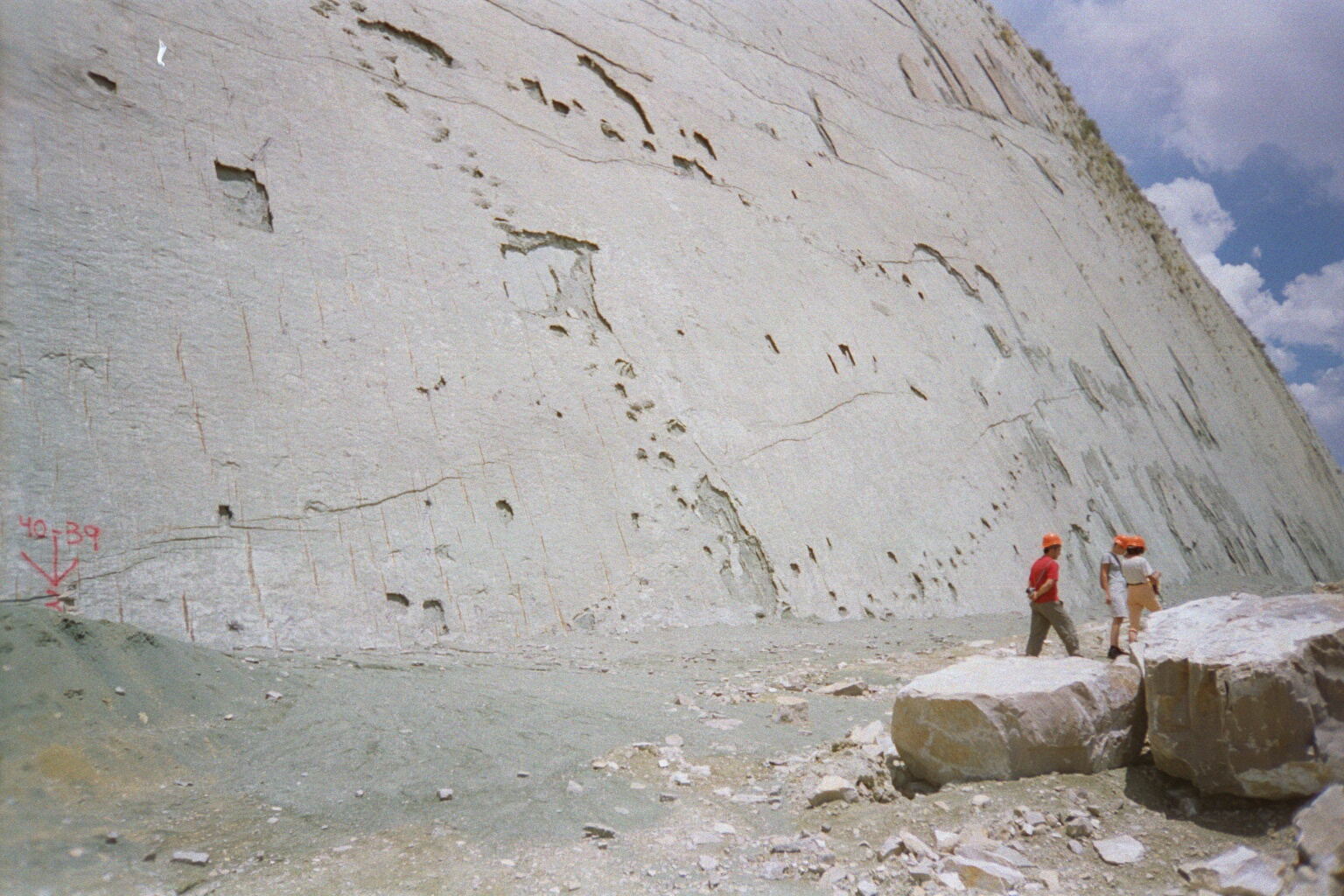Cal Orcko on:
[Wikipedia]
[Google]
[Amazon]


 Cal Orck’o is a
Cal Orck’o is a
Tentativ List World Heritage
Paleontology in Bolivia Dinosaur trace fossils Fossil trackways {{paleo-site-stub


 Cal Orck’o is a
Cal Orck’o is a fossil bed
A fossil (from Classical Latin , ) is any preserved remains, impression, or trace of any once-living thing from a past geological age. Examples include bones, shells, exoskeletons, stone imprints of animals or microbes, objects preserved in ...
in Bolivia
, image_flag = Bandera de Bolivia (Estado).svg
, flag_alt = Horizontal tricolor (red, yellow, and green from top to bottom) with the coat of arms of Bolivia in the center
, flag_alt2 = 7 × 7 square p ...
. It is located in a quarry approximately 4.4 km northwest of Sucre
Sucre () is the Capital city, capital of Bolivia, the capital of the Chuquisaca Department and the List of cities in Bolivia, 6th most populated city in Bolivia. Located in the south-central part of the country, Sucre lies at an elevation of . T ...
( Chuquisaca Department, Bolivia) in the Altiplano/Cordillera Oriental, in the El Molino Formation
The El Molino Formation is a Maastrichtian geologic formation pertaining to the Puca Group of central Bolivia. The formation comprises fine-grained sandstones and sandy limestones with stromatolites deposited in a shallow marine to lacustrine env ...
( Middle Maastrichtian).
The bed is composed of oolitic fossiliferous limestone, associated with large, freshwater stromatolites and nine levels of dinosaur
Dinosaurs are a diverse group of reptiles of the clade Dinosauria. They first appeared during the Triassic period, between 243 and 233.23 million years ago (mya), although the exact origin and timing of the evolution of dinosaurs is t ...
tracks (trace fossils
A trace fossil, also known as an ichnofossil (; from el, ἴχνος ''ikhnos'' "trace, track"), is a fossil record of biological activity but not the preserved remains of the plant or animal itself. Trace fossils contrast with body fossils, ...
) in the El Molino Formation document an open lacustrine environment.
The main track-bearing level is almost vertical with a surface area of ~ 65,000 m2. The high-resolution mapping of the site from 1998 to 2015 revealed a total of 12,092 individual dinosaur tracks in 465 trackways. Nine different morphotypes of dinosaur tracks have been documented. Amongst them are several trackways of theropods, ornithopods, ankylosaurs
Ankylosauria is a group of herbivorous dinosaurs of the order Ornithischia. It includes the great majority of dinosaurs with armor in the form of bony osteoderms, similar to turtles. Ankylosaurs were bulky quadrupeds, with short, powerful limbs. ...
and sauropods, with the latter group accounting for 26% of the trackways.
References
External links
Tentativ List World Heritage
Paleontology in Bolivia Dinosaur trace fossils Fossil trackways {{paleo-site-stub